Archaeology of the Land of Israel
Introduction
The land of Israel has been the home of peoples of different cultures and beliefs for some one and a half million years. It is to these people and their cultures that the exhibition galleries of the Archaeology Wing is dedicated, serving as primary showcase to the rich and fascinating local archaeological heritage. The display takes the visitor on a journey of unparalleled depth into the historical course of ancient Israel; the birthplace of the Bible, and the cradle of the three monotheistic religions; from prehistoric times - to the beginning of the Ottoman period.
Historical events of prime importance, cultural achievements, technological innovations, and artistic creativity are all displayed in the galleries through thousands of ancient artifacts, many of them are one of a kind. These objects offer a close look to the lifestyle, beliefs, and worldview of the peoples of this area – from ordinary people to kings and monarchs – in distant and fascinating times.
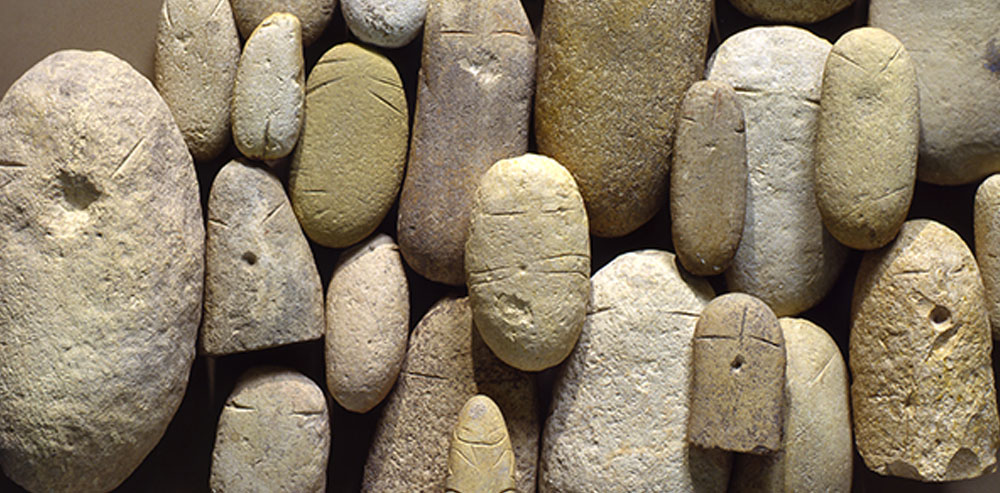
The Dawn of Civilization
The Stone Age / Paleolithic 1.5 million years to 11,500 before today
Neolithic 11,500 - 6,500 before today
This gallery recounts the story of the earliest peoples, and cultures of the Land of Israel. The rare, ancient exhibits displayed here reconstruct the first, unwritten chapters of human history in this region, and shed light on the roots of human culture.
The Land of Israel played a central role in human history from its beginnings. Located at a the crossroads of three continents, it served as a “bridge” along which early humans made their way from their homeland in Africa to Asia, and Europe for the past 1.5 million years . These bold emigrants, prehistoric humans, were the earliest inhabitants of the Land. Although they were different from us, the traces that they left behind indicate how they had already developed our unique human characteristics; the ability to share food, such as the flesh of a wild bull, whose giant horns are displayed in the gallery; to establish dwelling sites; the capability for cooperation to produce stone tools for cutting, digging, and many other functions.
The remains of a fire, lit 780,000 years ago, for protection from predators, for lighting, heating, cooking, and as a gathering place, marks a turning point in the development of mankind. Human qualities are also evident in the small female figurine carved out of volcanic rock. This exemplifies the first known symbol; a small female figurine; dated to a quarter of a million years ago, and considered the world's oldest art work.
The burial of a youth, found together with the antlers of a fallow deer, some 100,000 years ago in a cave in the Galilee - the oldest cemetery in the world – testifies to the emergence of the first modern humans, our species, Homo sapiens. Prehistoric hunter-gatherers were people like us – they brought about a cultural revolution known as "the great leap forward”. Local descendants, who lived in the late Stone Age, 15,000 years ago, were the first permanent settlers. They built stone structures, storage facilities, invented new tools, engaged in personal ornamentation, created art objects such as images of animals, humans, and symbolic objects, sought spiritual meaning in their lives, and developed customs, and practices that are still with us today.
Domesticated seeds for sowing, among the oldest to have been planted in the world, and a grinding bowl from the Neolithic period, are among the earliest evidence to these formative events in the development of human culture. This marked the birth of agriculture, around 10,000 years ago, and the beginning of civilization. The first ritual artifacts were found in sites of the earliest settled communities and ancient tribal kingdoms of the Land of Israel. These included the world's oldest masks, plastered human skulls used in ancestral worship, goddess figurines – alongside such products as textiles and pottery, among the oldest known to us.
The visit in the gallery is, therefore, a journey that lasts hundreds of thousands of years, crossing through the major milestones of mankind's progress. The rare finds on display are silent messages sent to us from the distant past, a universal heritage from our forefathers, and we must pass them on to future generations.
Chalcolithic
4500-3500 BCE
The name Chalcolithic is composed of two Greek words: chalcos (Χαλκός) - copper - and lithos (Λίθος) – stone, and as the name suggests, during this period the transition from the Stone Age to Bronze Age occurred. This period became the backdrop to some of the greatest achievements in human history, metal production; the secondary products revolution (derivatives from animal sources such as wool, textiles and dairy goods); the development of art and religion; and the birth of specialized occupations. The objects on display reveal the remarkable progress humans made during this period, providing insight into human creativity.
The earliest metal artifacts were produced during the Chalcolithic period. The Nahal Mishmar hoard displays the highest technical and artistic achievement for the period which was not to be equaled for long time. This hoard includes some 400 artifacts, mostly cultic objects, produced by the lost wax technique, and richly decorated, mainly with horned animal motifs. The hoard also included some metal tool made by molds. This rare hoard was discovered in 1961 - during an expedition aided by the Israeli Defense Force, in search of Judean Desert scrolls. It was found wrapped in a straw mat, tucked under a rock, in a cave. Beyond their technological prowess, the cache objects testify to the rich intellectual and artistic world of their users. Some suggest that the objects belonged to the sanctuary in Ein Gedi, which was found practically empty of almost cult objects.
Exquisite, violin-shaped figurines were discovered in another sanctuary in Gilat from the same period. These human shaped objects were formed in near-abstract design, and were fashioned from a broad variety of stone-materials. Two more figurines were also found there: a clay female figurine – probably a goddess – with accentuated sex organs symbolizing fertility, her arm supporting a churn resting on her head; the second is a ram, symbolizing the male god, carrying three cornets on its back. These two figurines attest to the importance of the revolution of secondary products as perceived by the people of this period.
Domestic cults existed side by side with the central sacred shrines. Basalt stands were found in dwellings on the Golan Heights, often placed on a bench, their decoration reminiscent of a human face. They were probably the house-gods to whom the dwellers brought offerings, or else they may have served in rites pertaining to the fertility of the herd and the land. Sculpting in basalt stone required considerable effort and time, a sure sign of the objects’ significance in Chalcolithic society.
The gallery offers a fascinating glimpse of Chalcolithic burial customs; among them the use of ossuaries - secondary burial coffins for bones. Each coffin was decorated in a unique way, some with a human or animal face, others with animal motifs or with architectural elements.
The Land of Canaan
Bronze Age 3,500 – 1,200 BCE
During this crucial period in the history of mankind, the land of Canaan flourished in the shadow of the first great civilizations; Pharaonic Egypt to the south, and Ancient Near Eastern cultures to the north and east. An accelerated process of development, and invention brought about the extensive use of bronze, the beginning of urbanization, as well as the invention of writing.
Unique discoveries presented in the gallery demonstrate the place of Canaan amid the Ancient Near Eastern cultures, illustrating everyday life, the development of technology, and culture in the Land in those days.
More than 5,000 years ago a radical transformation took place throughout the Near East. The first planned cities were built, rapidly developing to become city-states. Arad was a flourishing urban center with commercial ties extending to Egypt as early as the late fourth millennium BCE. A unique clay model house, sheds light on the structure and functions of the first urban houses.
However, the first cities did not survive for long. Geopolitical changes led to the cities’ collapse, and an interim period, which lasted some 300 years, was to follow. During this time, people reverted to rural, and semi-nomadic ways of life. A rare silver goblet from Ein Samiya, bears the only extant artistic depiction known from this period.
During the first half of the second millennium BCE, a rich urban culture reappeared in Canaan, alongside the pastoral society. This period is seen as the backdrop of the stories of the patriarchs in the Bible, and it is then that the major cities mentioned in the Bible, such as Hazor, Ashkelon, and Megiddo, gained importance. Monumental basalt sculptures from Hazor, which adorned the palaces and temples, attest to the building revolution which took place at this time. Especially impressive are the carved lion statues which are associated with this city’s great temple.
Canaan continued to prosper in the second half of the second millennium BCE, when it fell under Egyptian rule. Among the many discoveries presented here is a magnificent, ivory statue, inscribed with the name Pharaoh Merneptah; the king on whose monumental victory stelae appears the earliest written reference to 'Israel' as an ethnic entity.
A wealth of gold jewelry, precious stones, ivory carvings and cosmetic utensils – are evidence of the country’s prosperity. Extensive trade relations throughout the Near East created a unified international style evident in the design of luxury items. Note the royal feast depicted on the Megiddo, ivory inlay as a typical example of such luxury items.
At the beginning of the 12th century BCE, economic and political instability affected the entire ancient Near East, leading to the collapse of the great empires. Egypt retreated into its borders, and the political players of the eastern Mediterranean disappeared.
Israel and the Bible
Iron Age 1,200 – 332 BCE
The Iron Age galleries of the Museum’s Archaeological Wing tell the story of the emergence of the Israelites on the stage of history, and illustrated by significant objects, all of them dated 1,200 BCE to 332 BCE. The Bible relates many of the important events of this period, and the archaeological artifacts provide a fascinating dimension to those accounts.
At the beginning of this period the Israelites lived in small settlements in Samaria, and Upper Galilee. A bronze bull statuette, discovered in a cult center on a hilltop near Dothan in Samaria, indicates how in those days Israelite ceremonial worship took place in open-air sites as well. The Canaanite character of the small figurine, like that of other finds, may indicate a similarity of their cult to that of their Canaanite neighbors, and attest to the Israelites’ origins in the Land.
According to the Bible, the Israelites evolved into a kingdom. After a few decades this kingdom split into two; the Kingdom of Judah in the south, and the Kingdom of Israel to the north. The southern monarchy was small and isolated. It was ruled by the House of David, a fact corroborated by an inscription on a commemorative stela which is to date the only extra-biblical proof from that period of the existence of King David.
The (northern) Kingdom of Israel, was stronger and more prosperous, and had developed extensive commercial ties with the countries surrounding it. Attesting to those ties is a small carved ivory inlay, showing a striding sphinx, found in the kingdom’s capital, Samaria, which was used as furniture decoration in the palace.
Royal inscriptions and seals are on display in the galleries, bearing the names of Ahaziyahu, Uzziah, and Hezekiah - kings of Judah, and Jehoram, Jeroboam and Menahem - kings of Israel. These offer rare archaeological evidence to the existence of these kings, whose names are listed in the Bible. In 722 BCE the Assyrian Empire set out on major military campaigns which brought about the end of the Kingdom of Israel. The Kingdom of Judah managed to remain independent, but 130 years later, the Babylonian king Nebuchadnezzar sent his army to take over the rebellious Judah. Jerusalem was laid to waste, the temple was torched, and much of the population of Judah was exiled to Babylon. It is to this dramatic period that the Priestly Benediction, the oldest copy of a biblical text ever found is dated, incised on silver amulets.
Less than fifty years after the exile, Cyrus king of Persia conquered Babylon and allowed the Judahite exiles to return to their homeland and rebuild their temple. Under Persian rule Judah became a province, known as Yehud, it continued until it was conquered yet again, this time by Alexander the Great in 332 BCE. The seals and coins in the gallery bear the official name of Yehud.
Greeks, Romans, and Jews
Hellenistic period - 332 - 63 BCE
Early Roman period / Herodian period / period of the Second Temple 63 BCE - 70 CE
Early Roman period / Herodian period / period of the Second Temple 63 BCE - 70 CE
Alexander the Great’s conquest of the East, including the land of Israel in 332 BCE, marks a turning point in the history of the ancient world, the beginning of the Hellenistic period and the fusion of East and West that gave birth to Western civilization.
Hellenization brought the Greek language and transformed cultural, social, and political conventions. This is evident in the statues and figurines, ritual objects, inscriptions and coins, jewelry, and funerary decorations on display. One of the most important finds from this periodis located in this gallery, the Heliodorus Inscription – the Seleucid king’s order to appoint an official in charge of temples and sanctuaries in the region – including the Jerusalem Temple. This inscription sheds light on the relationship between the Seleucid rulers and the local Jewish population.
The Roman conquest in 63 BCE and the appointment of Herod as king of Judea mark the beginning of a new era. One of the most important building projects carried out by Herod, known as the greatest builder ever in the Land, was the Temple Mount in Jerusalem. Only a few vestiges of this temple have survived, most of them on display here; a unique, stone inscription in Hebrew from the parapet at the southwestern corner of the Temple Mount indicates the place where the priest once stood to sound the trumpet announcing the beginning and end of the Sabbath. King Herod's death in 4 BCE put an end to a relatively peaceful, and prosperous era. Fragments from his impressive mausoleum at Herodium are displayed, alongside the king's coffin.
Religious turmoil, and social tension as the Second Temple period drew to a close, were the backdrop to the activity of Jesus of Nazareth, whose teachings created a new religion – Christianity. Jesus’ dramatic life story is reflected in two rare objects relating to his trial and crucifixion. A Latin dedicatory inscription from Caesarea, mentioning Pontius Pilate, the Roman procurator of Judea who sentenced Jesus to his crucifixion; and an ossuary (a box for the burial of bones). The ossuary contained, according to the name appearing twice on it the high priest Joseph son of Caiaphas, who was involved in Jesus’ arrest, according to the New Testament. An iron nail, embedded in a heel bone, displayed next to the ossuary in which it was found, is the only archaeological evidence of the Roman practice of execution by crucifixion to have survived in the world.
This turbulent period ended in the Great Revolt of the Jewish population against the Roman Empire (CE 66 - 70), which led to the destruction of the Temple and Jerusalem. Masada became the last stronghold. There, as contemporary Jewish historian Flavius Josephus tells us, the last of the rebels barricaded themselves in, where they probably died in the year 73 CE. The personal belongings of a man, a woman and a child, and a woman’s braid, the only such remains to have been found in the archaeological excavations at Masada are a moving testimony to their last moments.
Under Roman Rule
Roman Period 63 BCE - 324 CE
The Roman period in the Land of Israel lasted some four hundred years, during which the Roman Empire controlled all aspects of life. A bronze statue of the Roman emperor Hadrian (117-138 CE), discovered in a Roman legion camp in the Beit Shean Valley, a cavalry soldier’s helmet, weapons and ritual objects - all attest to the presence, the organization, and the display of power of the Roman army and government in the Land of Israel.
The Roman presence also influenced culture and art, as can be seen in the notable discoveries, including magnificent mosaics, burial portraits, jewelry and sculptures that adorned the public space of Roman cities. A statue of Aphrodite, goddess of beauty and love, stood in the great bath house of Scythopolis – Roman Beth Shean. The sculpture, on which traces of remarkably well preserved colorful paint can still be discerned, is one of the most beautiful of its kind ever discovered.
But Roman rule provoked unrest among the Jews, culminating in the Bar Kokhba revolt (132-136 CE). The origins of Bar Kokhba (Simon son of Kosiba), leader of the revolt, are shrouded in mystery. The information we do have about him is partial, tendentious, and contradictory. Surviving letters portray a determined leader, courageous, and arrogant. Throughout the revolt, Bar Kokhba ran an organized and centralized administration and struck coins and weights, such as the one shown here, bearing his name and his official title, ‘Prince of Israel’.
The revolt was eventually put down causing destruction to the Land, and putting an end to Jewish hope for political independence. In the final days of the revolt, many rebels sought refuge in caves on the steep slopes of the Judean Desert gorges. They took their valuables into hiding with them, such as clothing and household items, weapons, and legal documents. The items that were found in the caves offer a fascinating glimpse of daily life of this period but also tell of the bitter end of their owners who found their death in those very same caves.
The Holy Land
Byzantine Period 324 – 638 CE
Early Muslim Period 638 – 750 CE
Early Muslim Period 638 – 750 CE
The presence of the three monotheistic religions - Judaism, Christianity and Islam - side by side in the Land of Israel frames the story of the "Holy Land" gallery.
Remains of churches and synagogues, their lamps, chandeliers, and other ritual objects, their mosaics and inscriptions, reveal the uniqueness of each religion and its set of beliefs - while pointing out the similarities in their material culture. Their resemblance is best illustrated in the reconstructions - of a synagogue and of a church bema – on display in the gallery, where the architectural design of their places of worship shows a common origin.
In the 4th century AD a major change took place in the hitherto-pagan Roman Empire, when Emperor Constantine recognized Christianity as a tolerated religion. By the end of the century, Christianity was declared the official religion of the Roman Empire, and the Land of Israel became “The Holy Land". The Byzantine administration launched many building projects in the Holy Land, pilgrims flocked to the holy places – some of them choosing to settle in the Land – and the local Christian population became the dominant force.
Christianity’s mark was everywhere; churches rose at the heart of every Christian settlement and their interior was richly decorated: the walls were covered with mosaics and frescoes, and their floors with colorful paving stones and rich mosaic carpets. This cultural richness is well reflected in objects on display in the gallery, among them a reconstruction of a Byzantine church bema (presbytery) made up of parts discovered in 17 separate church sites. Among other objects, the altar – a rectangular marble table - and an impressive cross-shaped baptismal font.
The Jewish community also invested enormous resources in their synagogues, which had become the main community institution since the destruction of the second Temple, used for prayer, study, and public gatherings. Like churches, the front of the building as well as its interior, were covered in carved stone, and the floor adorned with colorful mosaics, some of them depicting biblical scenes, as well as the temple and its implements. Reconstruction of the Susia synagogue bema, displayed in the gallery illustrates the design and decoration of the synagogue.
In the 7th century Muslims conquered the Middle East and the Land of Israel with it. Thanks to Israel’s proximity to Damascus, the capital of the Umayyad Caliphate, the Land enjoyed a great development boom and mosques and palaces were built in the new architectural style and technique.
Caliph Abd al-Malik, the dominant ruler of that period, built the Dome of the Rock in Jerusalem, paved new roads leading to the city and improved the old ones. The milestones on displayed in the gallery bearing his name, attest to his deeds. Another important caliph, Hisham, renovated Beit She'an, and ordered the building of the city market, from where mosaic inscriptions survived, bearing his name.
All the while, the three religions in the country continued to exist side by side.
Muslims and Crusaders
Early Muslim period 750 - 1099
Crusader period 1099 - 1291
Medieval Muslim period and later 1187 - 1516
Crusader period 1099 - 1291
Medieval Muslim period and later 1187 - 1516
When the Abbasids rose to power in mid-8th century, they moved their capital from Damascus to Baghdad, and the land of Israel became a distant province. Most of the archaeological evidence remaining from this period are everyday objects. These comprised mainly of ceramics, incorporating newly deloped techniques, colored glazes and glass guilding. See, for example, the unique ceramic bowl decorated with a bird as well as the glass fragment decorated with a golden deer.
A new phase began some 200 years later, when the Fatimid dynasty settled in Egypt making Cairo its capital. Although the Land of Israel was annexed to it, it did not benefit from its great prosperity. Its people fell victim to wars, Bedouin raids and earthquakes. Because of this many buried hoards survived, including those buried intentionally; some to be uncovered under the rubble; others hidden away; still waiting for their owners who never returned to collect them. Many spectacular caches were discovered; comprising day to day objects, jewelry and coins revealing a style that combined geometric and floralmotifs, animals, and inscriptions. One of the most prominent treasures was discovered in Caesarea, and was probably a dowry of a wealthy family, including gold jewelry, silver and precious stones.
The Land of Israel returned to Christian rule with the establishment of the "Crusader Kingdom of Jerusalem" in 1099, and for 200 years became a significant political entity. These years saw the largest construction projects in the country had known.
Crusaders brought the Romanesque and Gothic architectural style with them and merged them with the local Eastern style. Examples of wonderful Crusader art can be seen in the fresco found in the courtyard of the Gethsemane monastery, and on the Belvoir Romanesque Church relief of an angel.
The struggle between Muslims and Crusaders for the Land of Israel continued. After Ayyubid Saladin defeated the Crusaders in 1187, the Muslims ruled at the same time as the Crusaders. The stone slab found in Ashkelon is covered with an Arabic inscription, which have been over-written with carved heraldic crusader symbols.
In 1291 the Crusaders were finally expelled from the Land by the Mamluks. The powerful Mamluk Sultan, Baybars destroyed their strongholds and churches; erecting Muslim buildings on their ruins.
In 1516 the Ottoman Turks conquered Israel. Sultan Suleiman commanded the renovation and rebuilding of Jerusalem’s walls. The newly built walls resembled the walls of Istanbul that encircle the old city today. A building inscription commemorates their renewal.
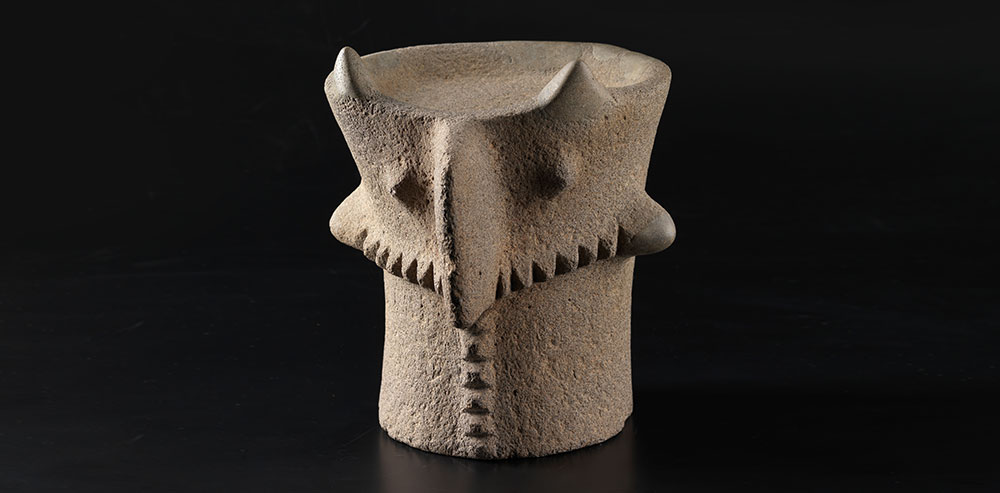
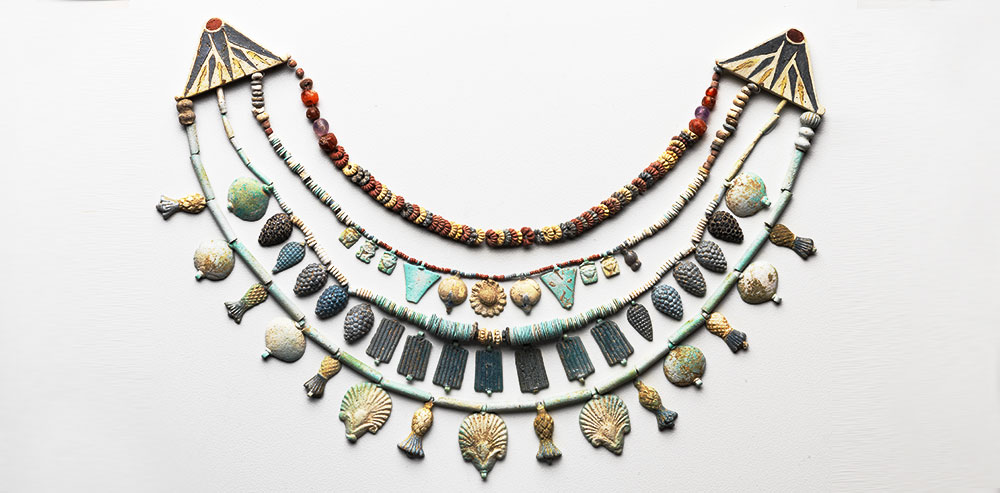
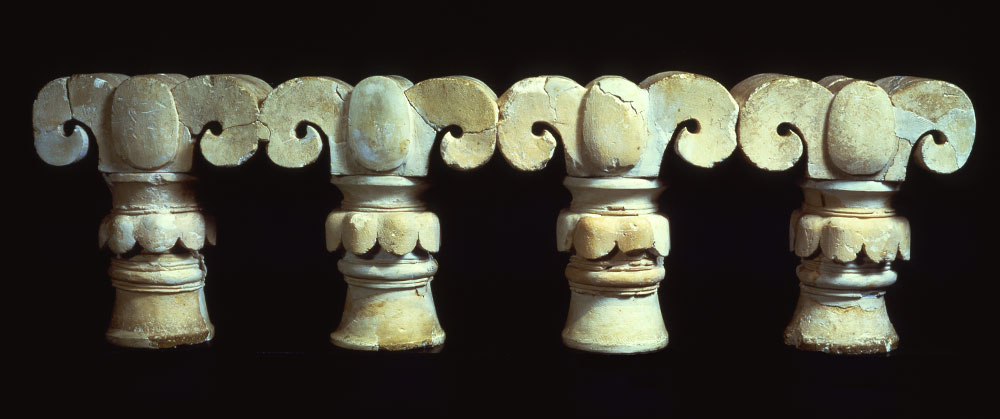
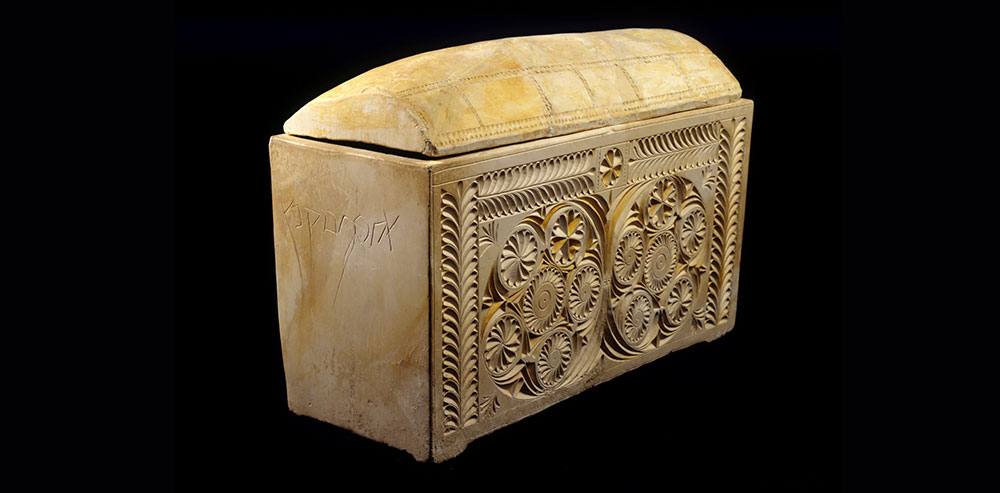
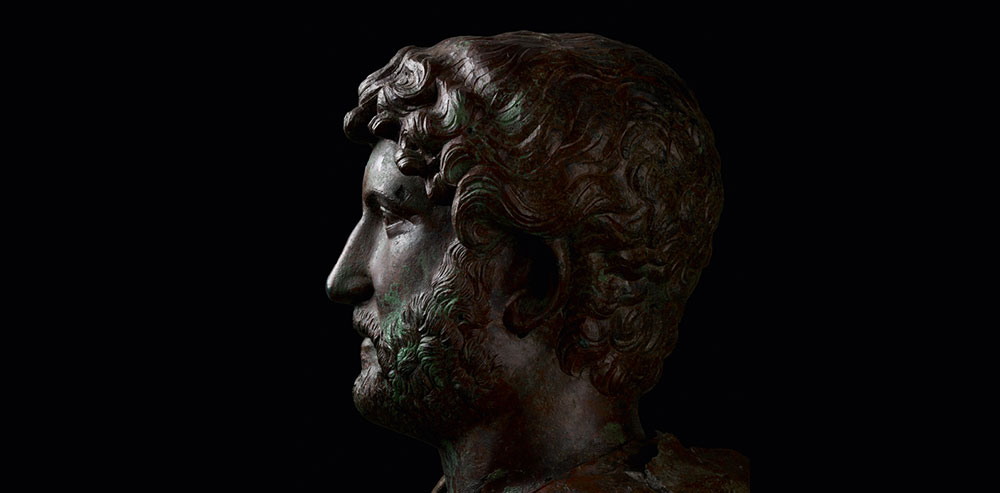
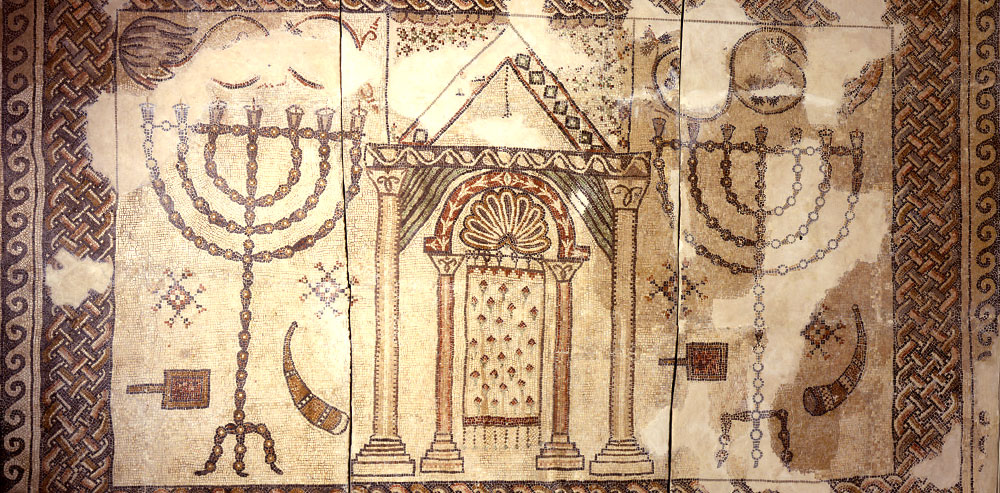
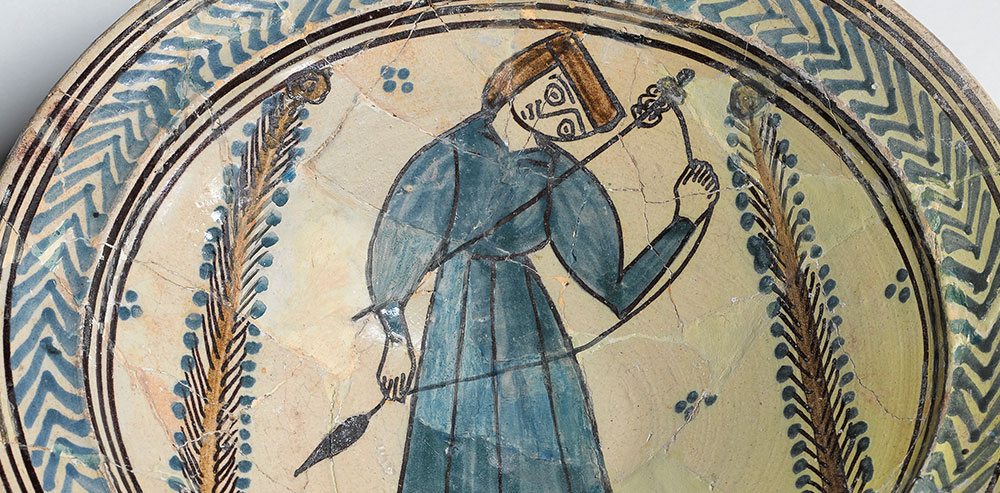
No comments:
Post a Comment